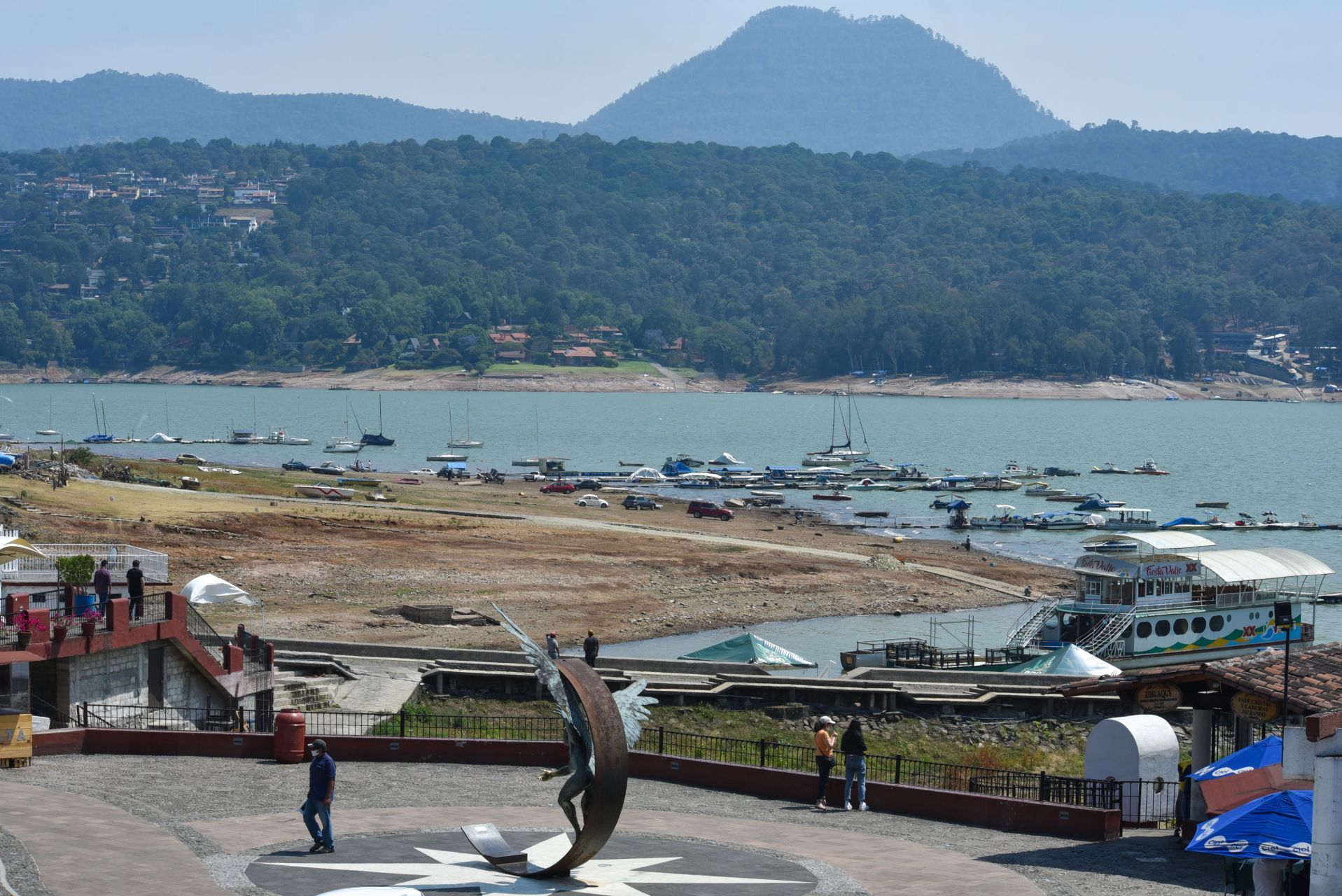The low water level in the Miguel Alemán Valdés dam makes economic recovery difficult for the more than 60 families that make a living from offering water rides
VALLE DE BRAVO. The drought puts Valle de Bravo tourism service providers out of work. Unable to recover from the effects of the pandemic that paralyzed the arrival of tourism, the boatmen of the Miguel Alemán dam now face a lack of water, which is now used to feed the Cutzamala system.
The current level of the Miguel Alemán Valdés reservoir is the main concern of tourism service providers. For this reason, the cooperative boatmen of the municipal pier demonstrated on May 18 in the esplanade of the municipal presidency of Valle de Bravo so that the Government no longer reduces the water levels of the dam.
The Valle de Bravo dam is the workplace of more than 60 families who offer boat and yacht tours for those who visit this municipality in southern Mexico, a reservoir that reports 50 percent full capacity.
“We are certainly experiencing a crisis. We come from a pandemic and then this issue of the lake, so it is alarming. There are companies that flatly did not stand up, while others are on the verge of bankruptcy, ”said Alicia Rodríguez, a provider of gastronomic tourism services in Valle de Bravo.

Since the problem of the lack of water in this municipality’s dam became visible last January, the cooperative boat operators have been resting three days a week, from Tuesday to Thursday, since they are “dead” days when tourism is zero.
“Right now everything is hitting us, on the one hand, piracy, on the other we cannot carry our maximum capacity of people due to sanitary regulations,” said Francisco Camacho, a Vallesan boatman.
According to the National Water Commission (Conagua), until May 19 the Valle de Bravo dam reported 190,336 million cubic meters of stored water, which represents 48.26 percent of its capacity.
The low water level of the dam makes it more difficult to sell the boat rides since it is no longer attractive for tourists to walk more than 500 linear meters from the municipal pier to the shore of the lake.

“It is very misleading, the dam has enough water to navigate, but if you go down from the city or from the highway you can see little water; you arrive here at the edge of the dam and see the level very low. That affects people because they say: ‘What walk are you going to give me? Just look, there is very little water,’ “said Francisco Camacho.
The more than 60 families that depend on this activity cannot give up their work, because despite the low level of the dam they continue to offer tours of the reservoir.
With a speed of seven kilometers per hour, they can travel the shore of the dam in just under two hours.
When on a regular basis, this same route takes three hours at the same speed.
The route through the Valle de Bravo dam is at 800 pesos per boat, whose transport capacity has also been reduced by the Covid-19 restrictions, further complicating the work to sell this service.

According to the yellow color of the federal government’s epidemiological traffic light, the maximum capacity on the boat is 50 percent, so it can only carry five people.
“The economic recovery has become quite complicated for us because we are not just two or three people or two or three cooperatives, we are quite a few cooperatives, apart from the people who have their own boats,” lamented Francisco Camacho.
Another problem that boatmen face is the piracy that caused the pandemic since now they face people who offer the same service for a lower price because they do not pay the insurance of the passengers, navigation permits that the Harbor Master requires, and dock permits.
These people (pirate boatmen) have decided to self-employ in these tours due to the need for work left by the coronavirus pandemic.
Source: elsoldetoluca.com.mx






